What If? (44 page)
Authors: Randall Munroe

By touching the bullet, you’ve just created an adequate vacuuming system.
Your body is restrained by a harness, and your arm remains attached to your body
—
flesh is surprisingly strong
—
but blood pours from your fingertip much faster than ordinarily possible. River’s “8.6 seconds”
might be an underestimate.
Th
en things get weird.
Th
e blood wraps around the bullet, forming a growing dark red sphere whose surface hums and vibrates with ripples moving too fast to see.
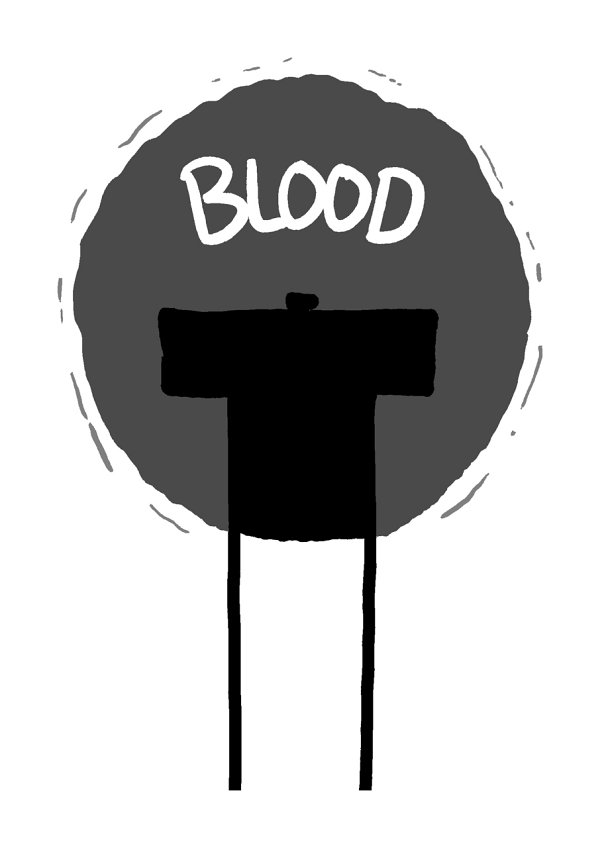
But wait
Th
ere’s a fact that now becomes becomes important:
You
float
on blood.
As the blood sphere grows, the force on your shoulder weakens . . . because the parts of your fingertips below the surface of the blood are buoyant! Blood is denser than flesh, and half the weight on your arm was coming from the last two knuckles of your fingers. When the blood is a few
centimeters deep, the load gets considerably lighter.
If you could wait for the sphere of blood to get 20 centimeters deep
—
and if your shoulder were intact
—
you might even be able to pull your arm away.
Problem:
Th
at would take five times as much blood as you have in your body.
It looks like you’re not going to make it.
Let’s rewind.
How to touch a neutron bullet: salt, water,
and vodka
You can touch the bullet and survive . . . but you need to surround it with water.
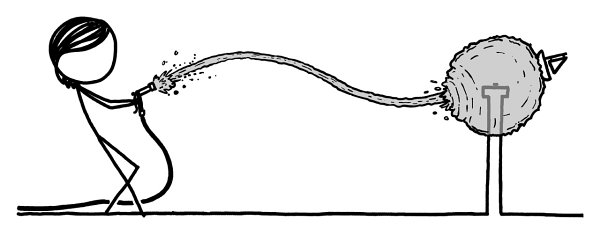
DO try this at home, and send me videos.
If you want to be really clever, you can dangle the end of the hose in the water and let the bullet’s gravity do the siphoning for you.
To touch the bullet, pour water onto the pedestal until it’s a meter or 2 deep on the side of the bullet. It will form a shape like one of these:
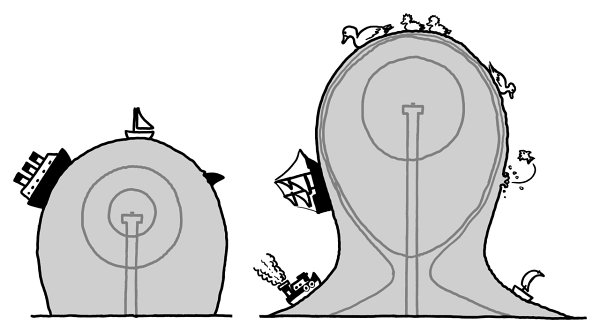
If those boats sink, you’re not salvaging them.
Now, dip your head and arm in.
Th
anks to the water, you’re able to wave your hand around the bullet without any difficulty!
Th
e bullet is pulling you toward it, but it’s pulling the water just as hard. Water (like meat) is virtually incompressible, even at these pressures, so nothing critical gets crushed.
5
However, you
may not quite be able to touch the bullet. When your fingers get a few millimeters away, the powerful gravity means that buoyancy plays a gigantic role. If your hand is slightly less dense than the water, it won’t be able to penetrate that last millimeter. If it’s slightly more dense, it will be sucked down.
Th
is is where the vodka and salt come in. If you find the bullet tugging on your fingertips
as you reach in, it means your fingers aren’t buoyant enough. Mix in some salt to make the water denser. If you find your fingertips sliding on an invisible surface at the edge of the bullet, make the water less dense by adding vodka.
If you got the balance just right, you could touch the bullet and live to tell about it.
Maybe.
Alternative plan
Sound too risky to you? No problem.
Th
is whole plan
—
the bullet, the water, the salt, the vodka
—
doubles as instructions for making the most difficult mixed drink in the history of beverages: the
Neutron Star.
So grab a straw and take a drink.

. . . and remember: If someone drops a cherry into your Neutron Star, and it sinks to the bottom, don’t try to fish it out. It’s gone.
- 1
Th
e Pauli exclusion principle keeps electrons from getting too close to each other.
Th
is effect is one of the main reasons that your laptop doesn’t fall through your lap.
- 2
It’s possible there’s
a category of objects heavier than neutron stars
—
but not quite heavy enough to become black holes
—
called “strange stars.”
- 3
A magical, unbreakable gun that you could hold without your arm being torn off. Don’t worry, that part comes later!
- 4
. . . unless Kyp Durron uses the Force to drag it back up.
- 5
When
you pull your arm out, watch for symptoms of decompression sickness due to nitrogen bubbles in the blood vessels in your hand.
weird (and worrying) questions from the what if? INBOX, #12

Q.
What if I swallow a tick that has Lyme disease? Will my stomach acid kill the tick and the borreliosis, or would I get Lyme disease from the inside out?
—Christopher Vogel
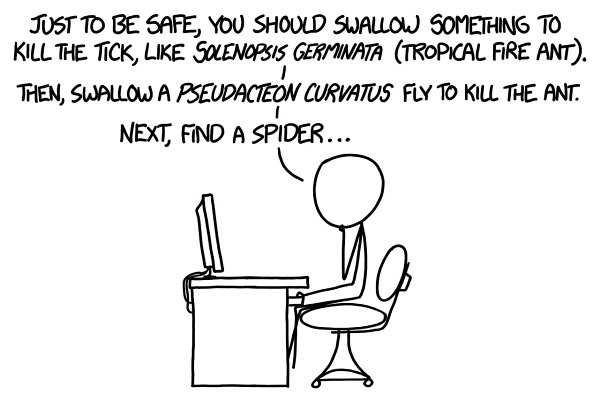
Q.
Assuming a relatively uniform resonant frequency in a passenger jet, how many cats, meowing at what resonant frequency of said jet, would be required to “bring it down”?
—Brittany

Richter 15
Q.
What if a Richter magnitude 15 earthquake were to hit America at, let’s say, New York City? What about a Richter 20? 25?
—Alec Farid
A.
Th
e Richter scale, which
has technically been replaced by the “moment magnitude”
1
scale, measures the energy released by an earthquake. It’s an open-ended scale, but since we usually hear about earthquakes with ratings from 3 to 9,
a lot of people probably think of 10 as the top and 1 as the bottom.
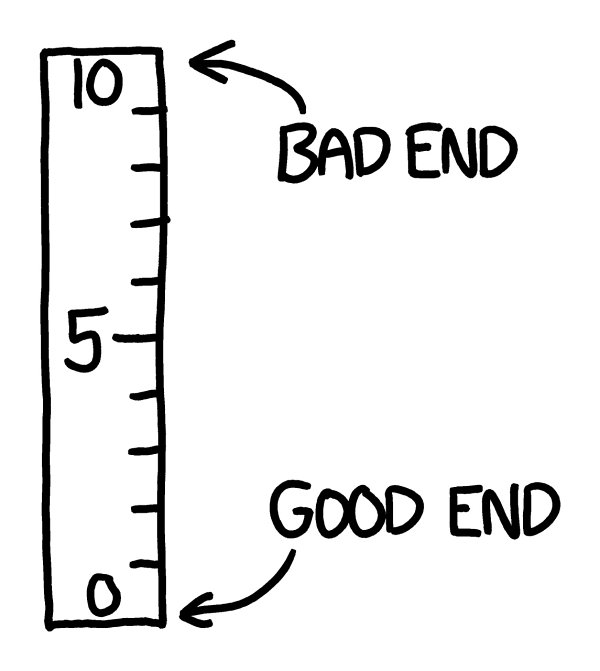
In fact, 10
isn’t
the top of the scale, but it might as well be. A magnitude 9 earthquake already measurably alters the rotation of the Earth; the two magnitude 9+ earthquakes this century both altered the length of the day by a tiny fraction of a second.
A magnitude 15 earthquake would involve the release of almost 10
32
joules of energy, which is roughly the gravitational
binding energy of the Earth. To put it another way, the Death Star caused a magnitude 15 earthquake on Alderaan.
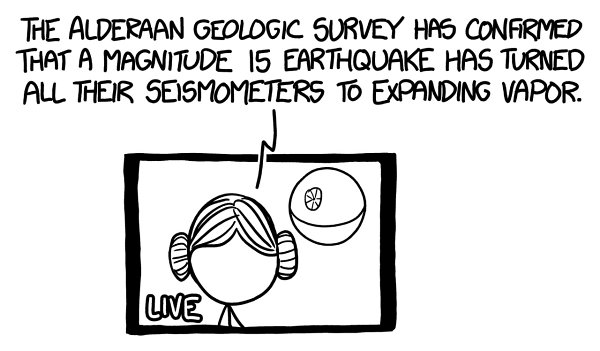
You could in theory have a more powerful earthquake on Earth, but in practice all it would mean is that the expanding cloud of debris would be hotter.
Th
e Sun, with its higher gravitational binding energy, could have a magnitude 20 quake (although it would certainly trigger some kind of a catastrophic nova).
Th
e most powerful quakes in the known universe, which occur in the
material in a superheavy neutron star, are about this magnitude.
Th
is is about the energy release you would get if you packed the entire volume of the Earth with hydrogen bombs and detonated them all at once.
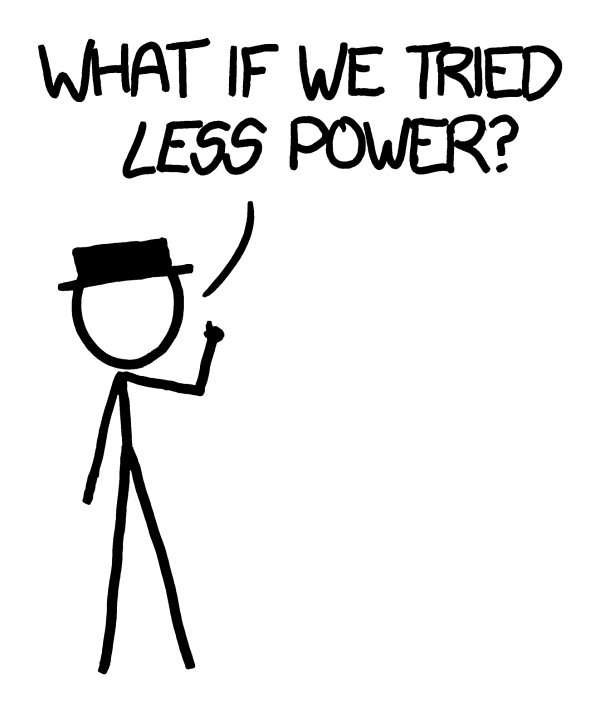
We spend a lot of time talking about things that are large and violent. But what about the
bottom
end of the scale? Is there such a thing as a magnitude 0 earthquake?
Yes! In fact, the scale goes all the way down
past
zero. Let’s take a look at some low-magnitude “earthquakes,” with a description of what they would be like if they hit your house.
Magnitude 0
Th
e Dallas
Cowboys running at full tilt into the side of your neighbor’s garage
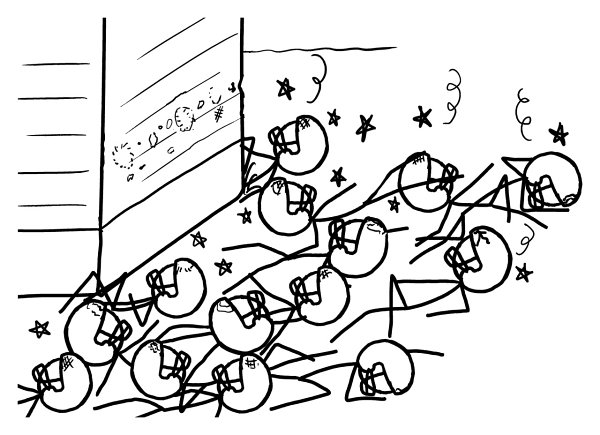
Magnitude -1
A single football player running into a tree in your yard
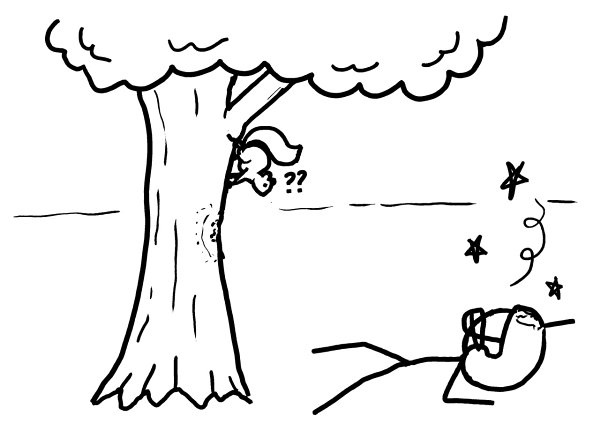
Magnitude -2
A cat falling off a dresser
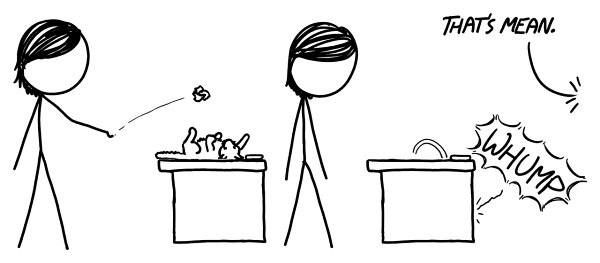
Magnitude -3
A cat knocking your cell phone off your nightstand

Magnitude -4
A penny falling off a dog

Magnitude -5
A key press on an IBM model M keyboard
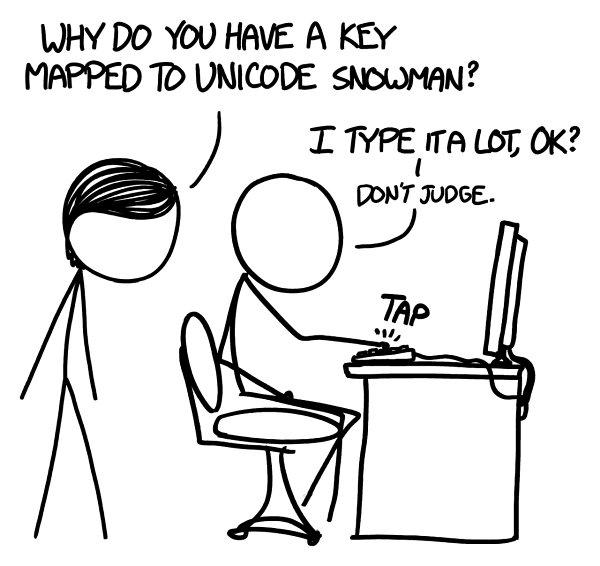
Magnitude -6
A key press on a lightweight keyboard

Magnitude -7
A single feather fluttering to the ground
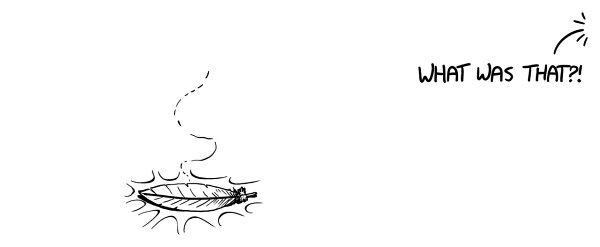
Magnitude -8
A grain of fine sand falling onto the pile at the bottom of a tiny hourglass

